OddCameras.com
FED Stereo Camera
The
FED Stereo Camera was introduced in 1988 and stayed in production until
about 1996, made by FED in Kharkov, Ukraine. There were several models
(or variations) during this period. The model presented is the standard
model with Cyrillic insciptions.
The camera uses 35mm slide
film. A
36 exposure film gives 21 pairs of stereoscopic photos. It uses the
"European" 7P format (7 perforations or holes or sprockets), the
picture size is 24x30 mm, a landscape format, whereas the Stero Realist
"American" 5P format picture size is 24x23, a portrait format. The 7P
format had already been used by Iloca in 1950 (before the company
changed to 5P in the mid 50s) and by the East German Belplasca,
introduced in 1955.
The camera has an automatic setting, so it's easy to use. However, as with most 35mm stereo cameras, there is no rangefinder.
Size: 160 x 82 x 56 mm (W x H x D)
Weight: 700 gr
Image Format:23.54 x 29.30 mm
Lenses: Industar 81, 1:2.8/38 mm
Aperture: automatic F2.8 at 1/30 to F14 at 1/650
Manual mode: 1/30 with apertures from F2.8 to F16, B mode at F2.8
Closest focus: 1m
Double exposure prevention, low light prevention
Some pictures:
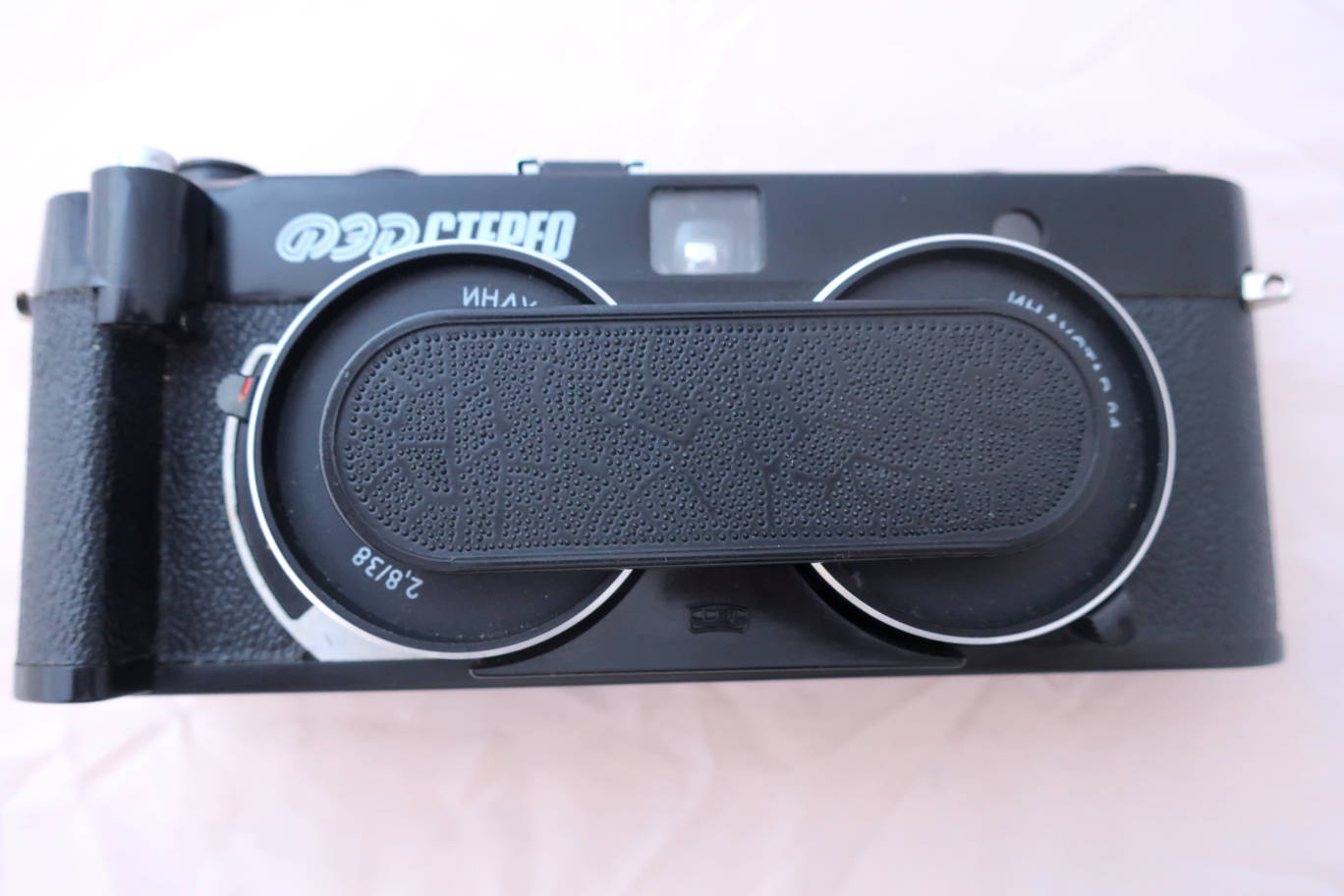
Camera front, lenses protected.
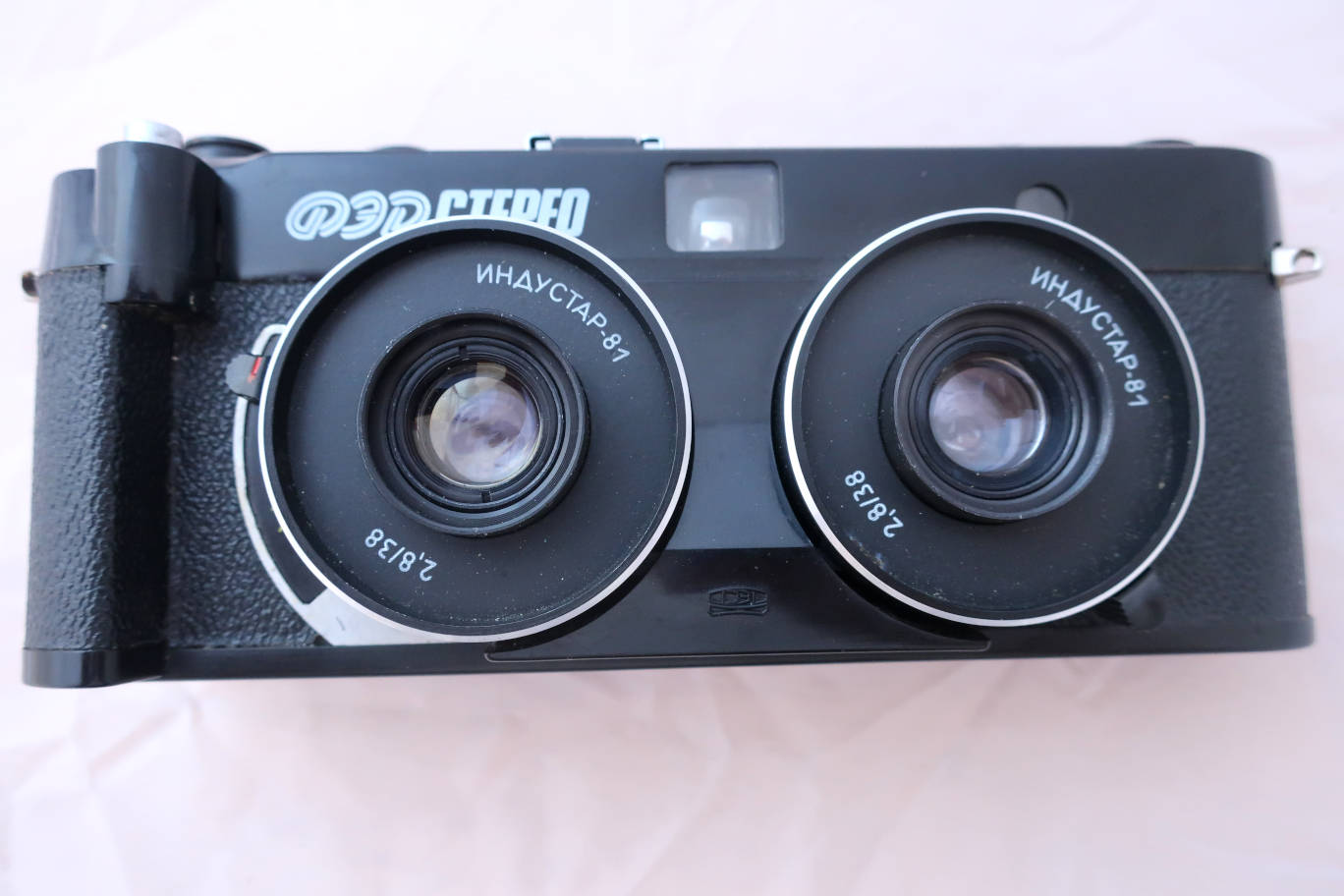
Camera front. Viewer and light meter window. under the right lrns: focussing lever.

Camera set to "A".
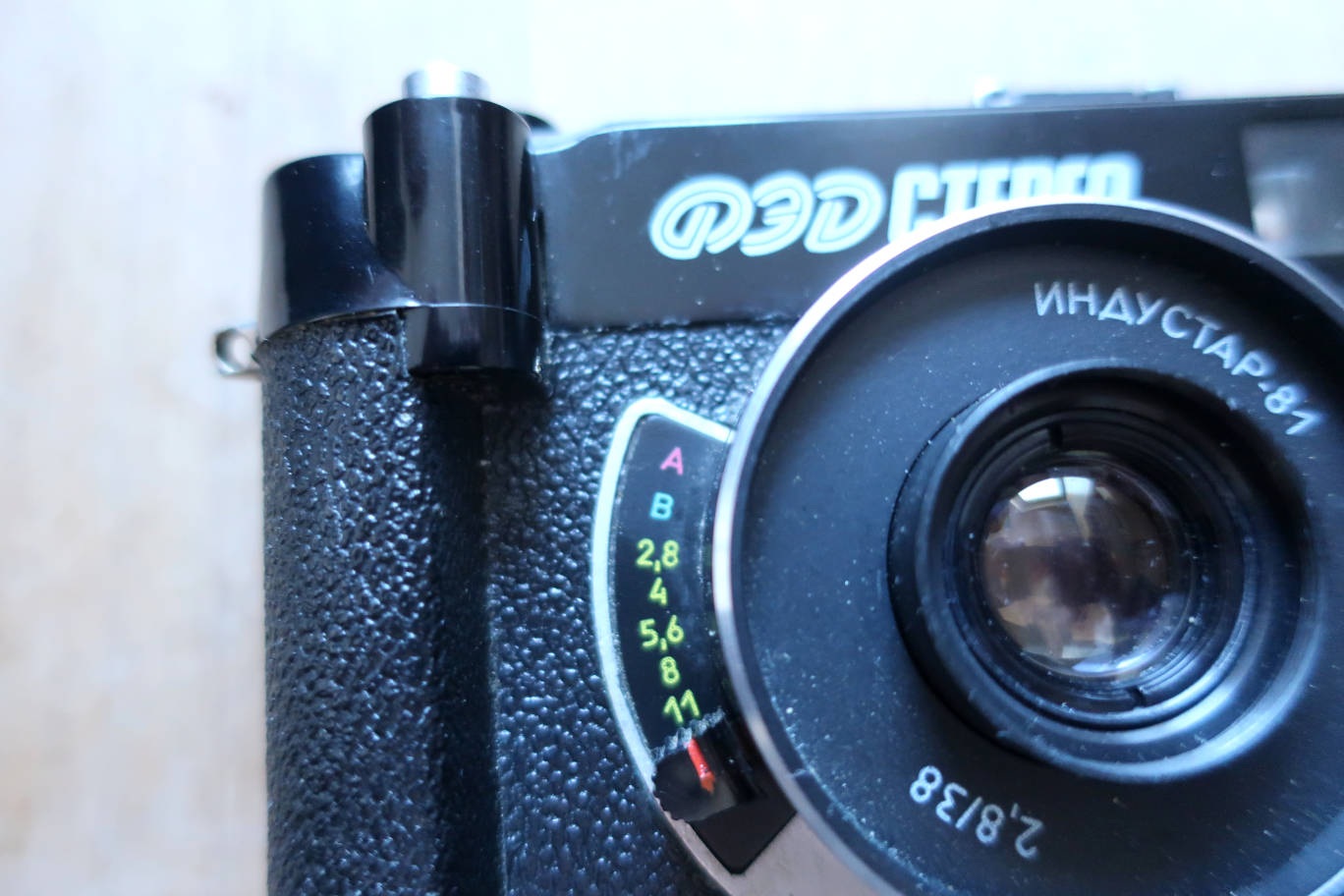
Camera set to F11.

Camera
back. Viewer. Conversion table ISO/DIN.
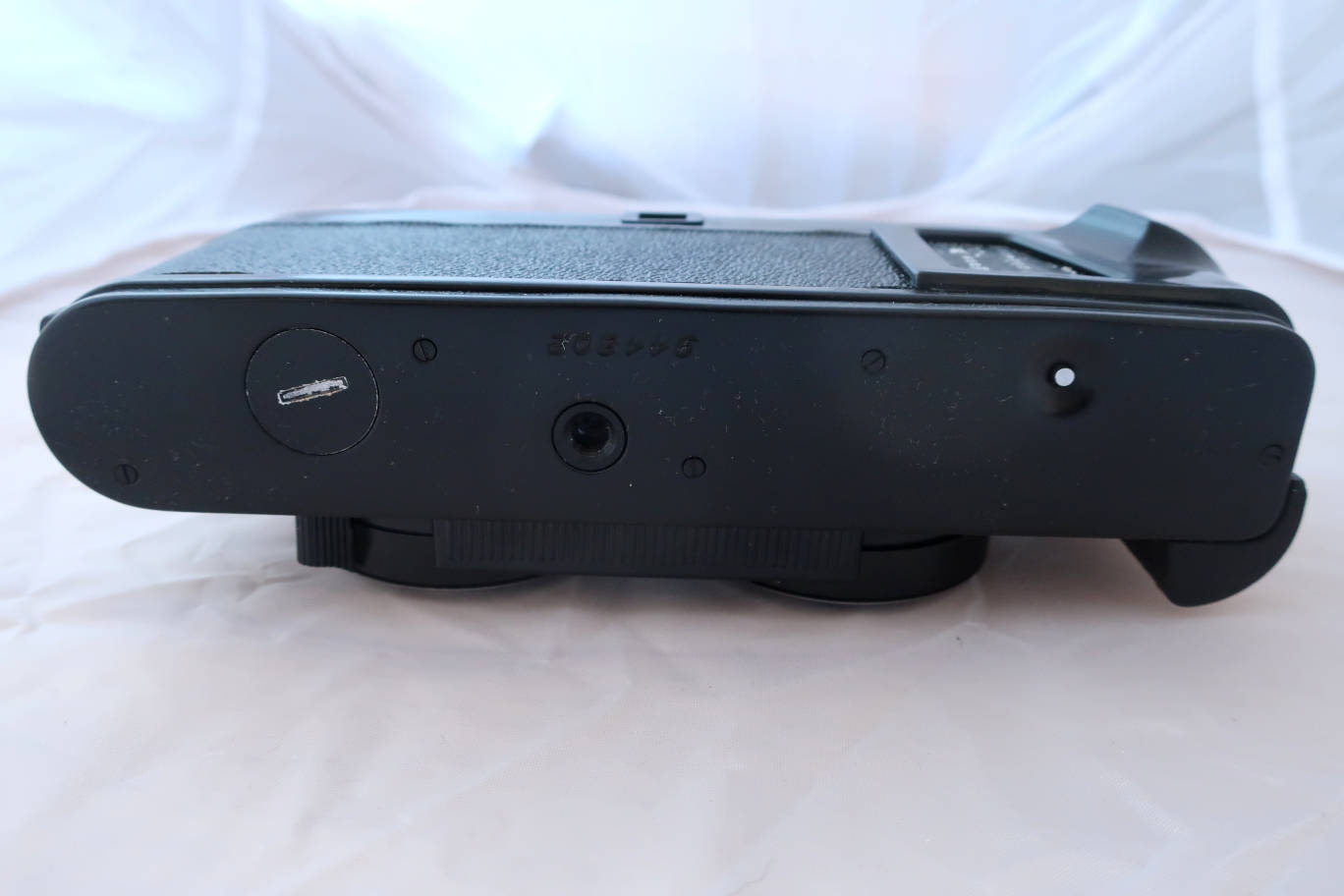
Camera
bottom. Battery compartment. Tripod socket. Rewind unlock. This camera
was built for a PX625 mercury battery, no longer available,
but a modern 625
battery works. It might not be a calibrated system anymore, but it's
better than nothing. There are other models which have an adapter for a
SR44 battery, these are calibrated to 1.5v. This adapter is not apt for
the old model.
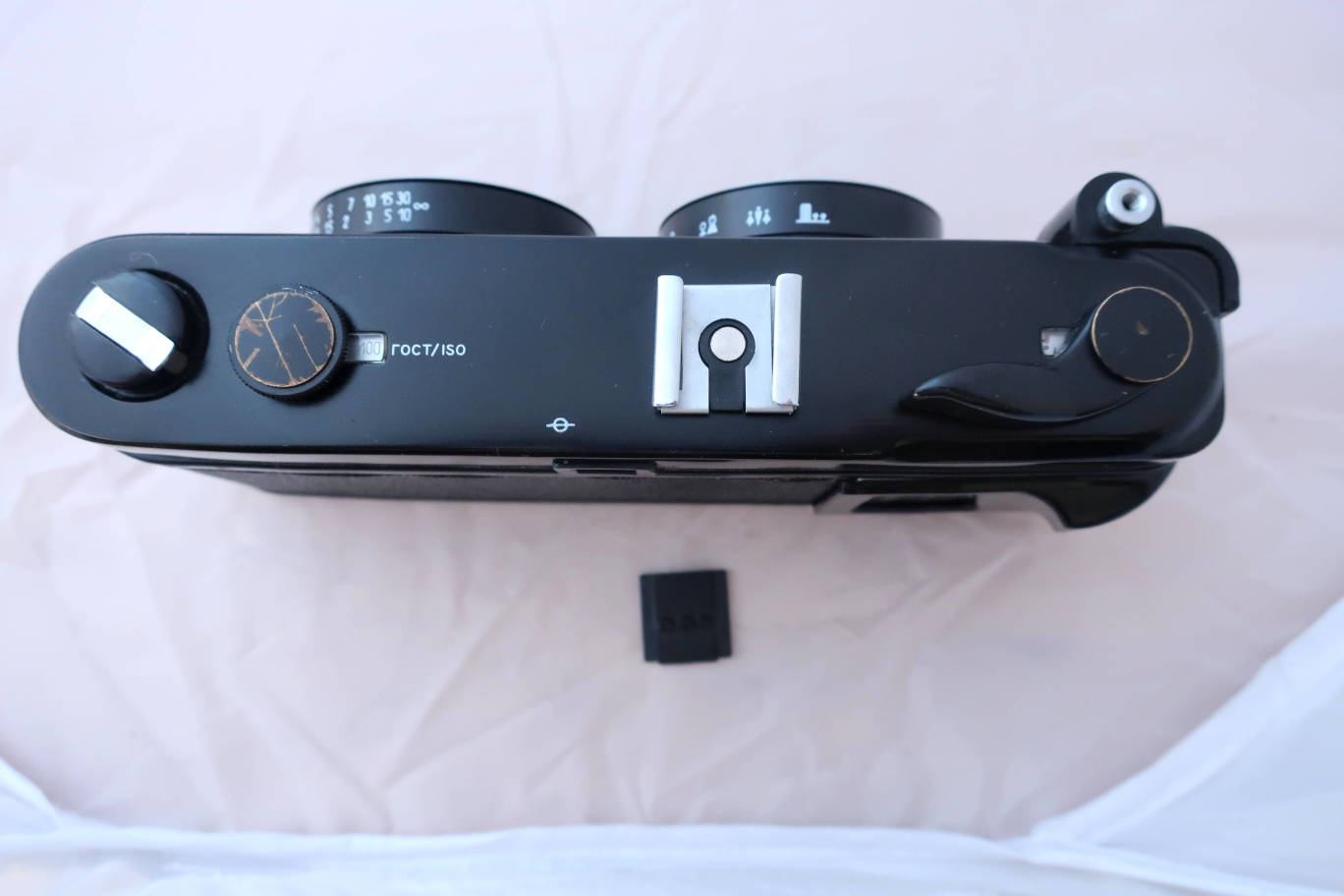
Seen
from above. Rewind. The exposure system is set to ISO 100. Hot shoe,
lid taken off. Film advance and exposure counter. The advance is a bit
odd, 1 stroke and three stroke alternating because of the stereo pairs.
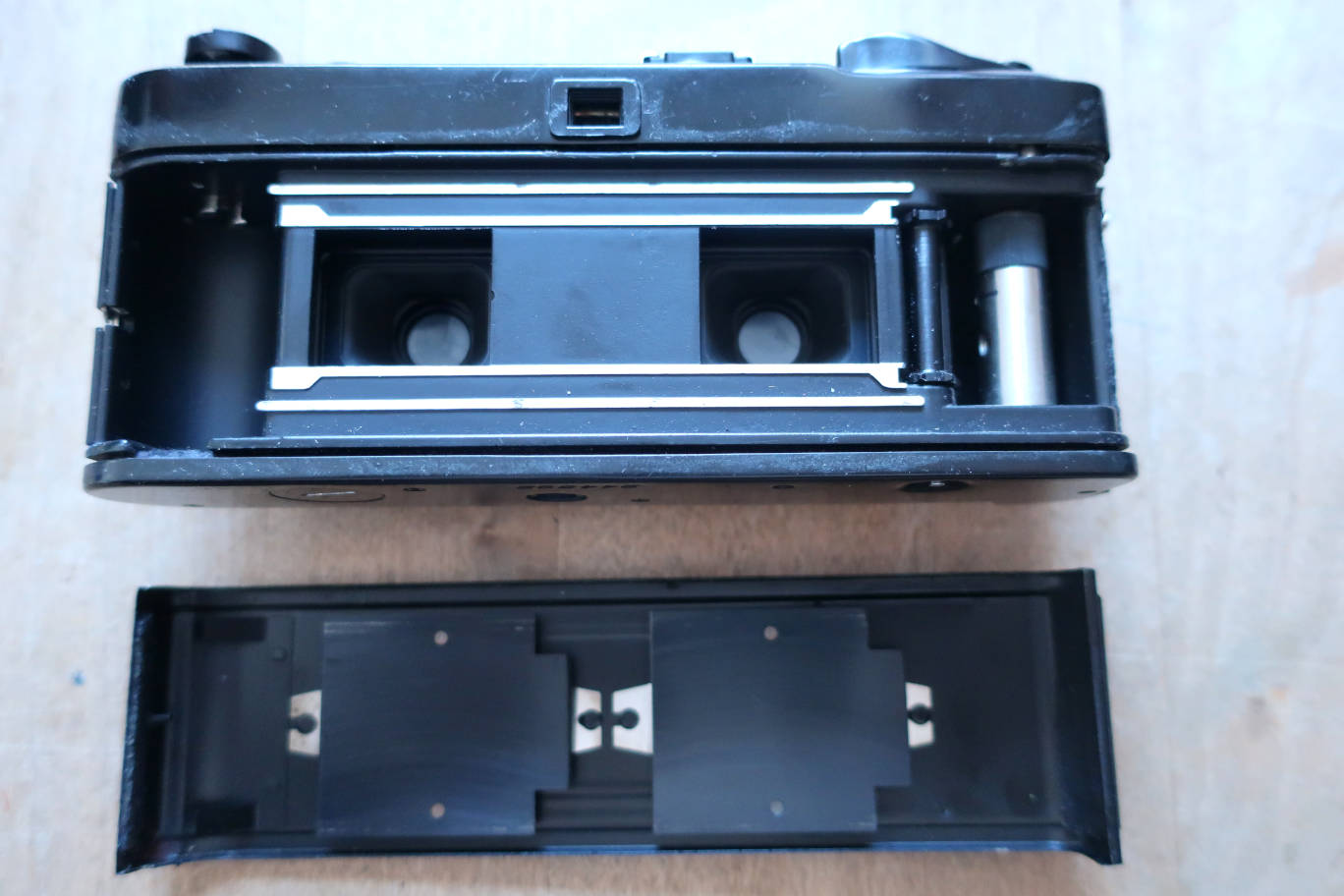
Camera back open. Putting the cover back, first engage it on the
right side. Then close the camera. On mine it can close without being
properly engaged. In this case the little pin for the counter doesn't
get pressed in and the winding won't stop.
The
camera is easy to use in automatic mode. Just do not forget to set the
proper distance. With 1/30 as lowest speed shake is nearly impossible.
The camera does not let you know which aperture/shutter speed
combination it chooses, as with the Lomo LC series. It gets exposure
quite right nevertheless. Double exposure prevention and low light
prevention do help a lot to make it a kind of quick point and shoot
stereo camera. A very nice find.
There
are Russian viewers for the 7P format. As mentioned above, older Iloca
viewers and Belplasca viewers work, but they are expensive, so are the
diapositive holders. A solution might be to use the widely available
Stereo Realist cardboard holders and cut them out with an Exacto knife.
The simple Stereo realist viewers work as well.